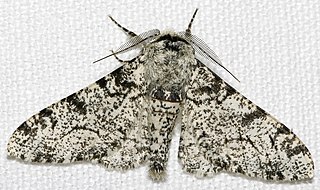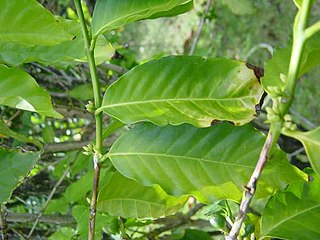Related Research Articles

The peppered moth is a temperate species of night-flying moth. It is mostly found in the northern hemisphere in places like Asia, Europe and North America. Peppered moth evolution is an example of population genetics and natural selection.

The Catechism of the Catholic Church is a reference work that summarizes the Catholic Church's doctrine. It was promulgated by Pope John Paul II in 1992 as a reference for the development of local catechisms, directed primarily to those responsible for catechesis and offered as "useful reading for all other Christian faithful". It has been translated into and published in more than twenty languages worldwide.

The evolution of the peppered moth is an evolutionary instance of directional colour change in the moth population as a consequence of air pollution during the Industrial Revolution. The frequency of dark-coloured moths increased at that time, an example of industrial melanism. Later, when pollution was reduced, the light-coloured form again predominated. Industrial melanism in the peppered moth was an early test of Charles Darwin's natural selection in action, and it remains a classic example in the teaching of evolution. In 1978, Sewall Wright described it as "the clearest case in which a conspicuous evolutionary process has actually been observed."

The Roman Ritual is one of the official liturgical books of the Roman Rite of the Latin Church of the Catholic Church. It contains all of the services that a priest or deacon may perform; and are not contained in the Missale Romanum, Pontificale Romanum, or Caeremoniale Episcoporum, but for convenience does include some rituals that one of these books contains.

The Gothic is a moth of the family Noctuidae. The species was first described by Carl Linnaeus in his 1758 10th edition of Systema Naturae. It is distributed in temperate Eurasia, in the Palearctic realm, including Europe, Turkey, Iran, Caucasus, Armenia, Transcaucasia, Central Asia, Altai mountains, and west and central Siberia.

The blue-tailed damselfly or common bluetail is a damselfly, belonging to the family Coenagrionidae.

Industrial melanism is an evolutionary effect prominent in several arthropods, where dark pigmentation (melanism) has evolved in an environment affected by industrial pollution, including sulphur dioxide gas and dark soot deposits. Sulphur dioxide kills lichens, leaving tree bark bare where in clean areas it is boldly patterned, while soot darkens bark and other surfaces. Darker pigmented individuals have a higher fitness in those areas as their camouflage matches the polluted background better; they are thus favoured by natural selection. This change, extensively studied by Bernard Kettlewell (1907–1979), is a popular teaching example in Darwinian evolution, providing evidence for natural selection. Kettlewell's results have been challenged by zoologists, creationists and the journalist Judith Hooper, but later researchers have upheld Kettlewell's findings.

Kettlewell's experiment was a biological experiment in the mid-1950s to study the evolutionary mechanism of industrial melanism in the peppered moth. It was executed by Bernard Kettlewell, working as a research fellow in the Department of Zoology, University of Oxford. He was investigating the cause of the appearance of dark-coloured moth since Industrial Revolution in England in the 19th century. He conducted his first experiment in 1953 in the polluted woodland of Birmingham, and his second experiment in 1955 in Birmingham as well as in the clean woods of Dorset.

Bourbon is a cultivar of Coffea arabica. It is one of the two main varietals from which many new cultivars are bred, the other being Typica. Both originated in Yemen.

The small red damselfly is a small damselfly flying in heathland bogs and streams. It is in the family Coenagrionidae.

The Malagasy brush warbler, also known as the Madagascar brush-warbler, is a species of Old World warbler in the family Acrocephalidae. It is found in Comoros and Madagascar. Its natural habitats are subtropical or tropical dry forests, subtropical or tropical moist lowland forests, and subtropical or tropical moist shrubland.

Phalaena is an obsolete genus of Lepidoptera used by Carl Linnaeus to house most moths.

Deltophora is a genus of moths in the family Gelechiidae. The genus was originally described from South Africa and based on a taxonomic revision contains about 20 species on all continents except Antarctica. Host plants of larvae and adults are only known for two Chinese species of Deltophora.
Alika is a monotypic moth genus of the family Noctuidae. Its only species, Alika typica, is found in Taiwan. Both the genus and species were first described by Strand in 1920.

Naenia is a genus of moths of the family Noctuidae erected by Stephens in 1827.
Similipepsis violacea is a moth of the family Sesiidae. It is known from the Republic of the Congo and Gabon.
S. typica may refer to:
N. typica may refer to:
Deltophora typica is a moth of the family Gelechiidae. It is found in south-western Africa, South Africa, Zimbabwe and Mozambique.
The Tinthiinae are a subfamily of clearwing moths, first established in 1917 by Ferdinand Le Cerf.